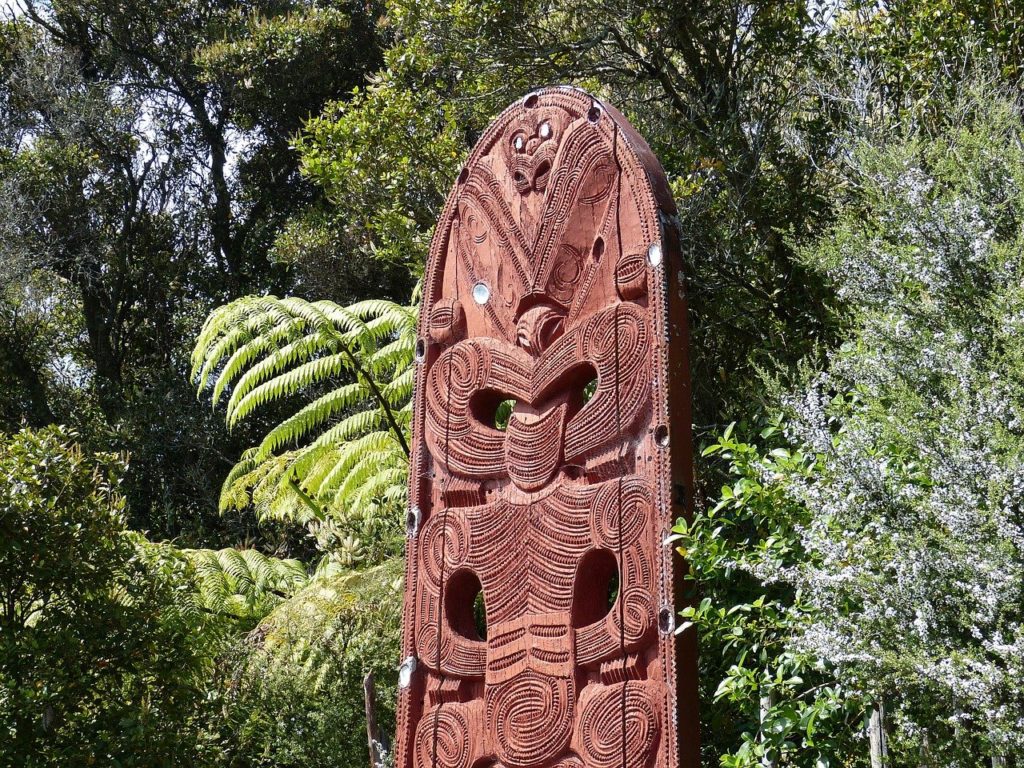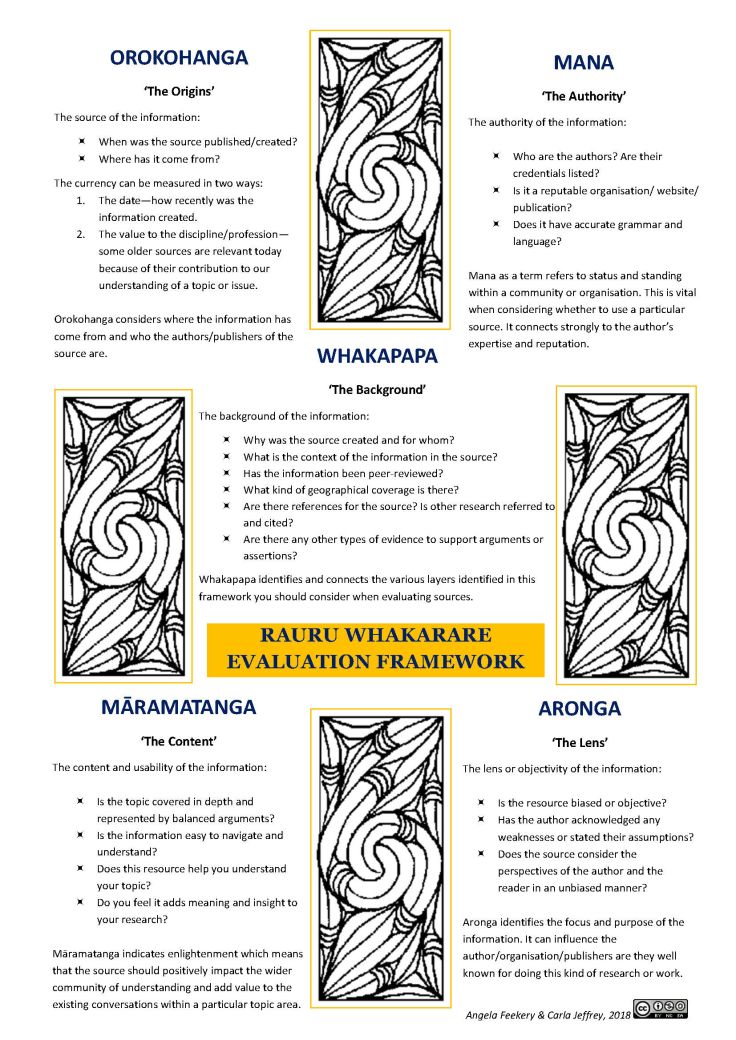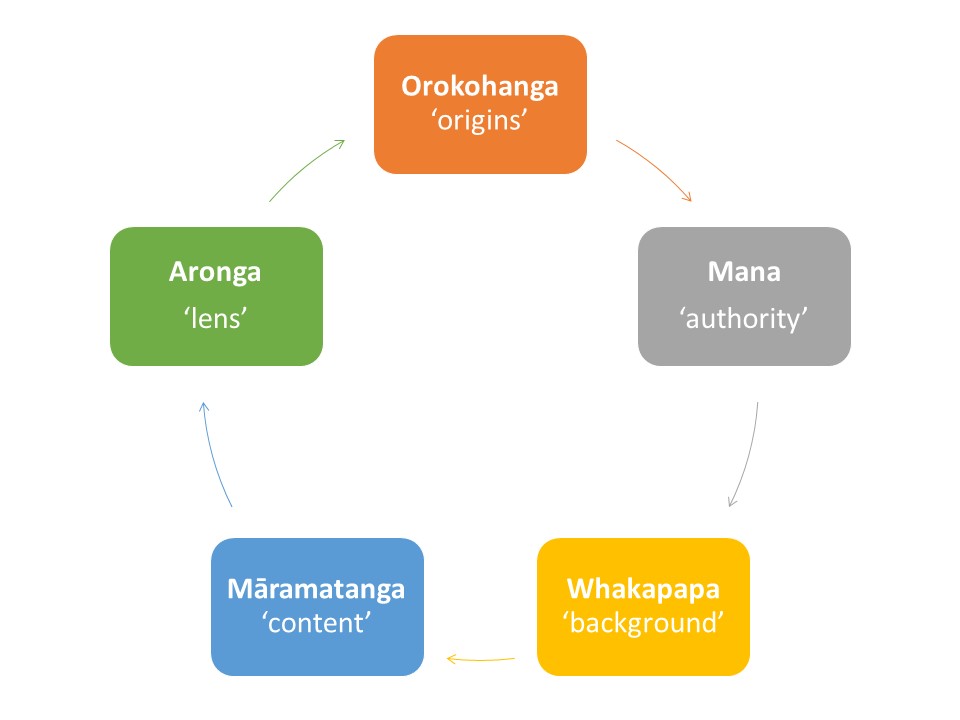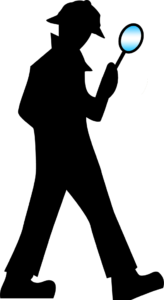The Whakarare framework: how to evaluate information in a holistic Māori-informed way

No doubt, information literacy matters tremendously in a higher education setting, amongst all the other types of literacies, of course, from academic to visual, digital to media. Years ago, when people still used dial-up internet access, I worked with a tool called ‘The Internet Detective’ – and I still believe in its principles today.
Nothing has changed, just the sheer amount of new information sources coming our way every day. In fact, I would say detective work is more necessary than ever before with all the possibly fake or biased news about. Students often come to us (CCI Academic Skills) and are confused about how to critique, assess or evaluate sources or distinguish between these actions.
Let me introduce you to the Rauru Whakarare framework for evaluation. Never heard of it? Sounds exotic? What the hell…? It looks like a different language!? It is a worthwhile read, a bit like work instructions in a foreign language – in Māori.
Let’s have a closer look. The main headings are:
Orokohanga – the ‘origins’
Mana – the ‘authority’
Whakapapa – the ‘background’
Māramatanga – the ‘content’
Aronga – the ‘lens’
And in poster format:

If you prefer a circular way it would look something like this:

What are the applications and uses of the framework? Well, the tsunami of information we receive each day is enormous. How can anybody decide what’s important, what’s worth reading or even harder, what’s worth putting into your essay? If you are information source hunting, after finding something vaguely interesting, take a deep breath and switch on your critical mind. Ask yourself (and the text) questions like:
- Why was this source created?
- Who was the intended audience?
- What is the context here?
- Whose perspectives are given?
- Has the source been filtered through any type of review or feedback?
- What geographical location is covered?
- Has it any value elsewhere?
Step 1 – OROKOHANGA / origin
This is about the currency of the information. Ask yourself where, when and who published the text?
Step 2 – MANA / authority
There is always a danger you focus too much on content not quality. Take step 2 and look for credibility and MANA/ authority. Was it eg spellchecked or hastily put together?
Step 3 – WHAKAPAPA / background
Part of the WHAKAPAPA is the question whether the source has been peer-reviewed. Again, this is often puzzling for first-time researchers. It connects to the authority question before and subsequently the scrutiny a text has been exposed to. Peers of the author/s will look at an anonymous text and give their judgements. Stop here for a second – this is an evaluation, too! They have to ask the same questions (Who? What? When? Why? How? What next?) in order to compare to set standards.
Searching for relevance in the research landscape can be daunting.
- Use the 3 Rs – is your source reliable? relatable? recent? (The latter is often expected by your tutors but leaves room for interpretation).
- Are there any references given?
- Is any support evident?
- Can you spot the main argument or assertion? Bias maybe?
- Now, let’s stop here and think about confirmation bias for a minute. You are short of time and desperate to add references into your text.
You find something that confirms what you are thinking right now. Bingo – stick it in. STOP! – funny, Google just found something for you on the click of a mouse? Dobelli (2013, p. 23) calls it ‘the mother of all misconception […] or the tendency to interpret new information to fit your existing theories, beliefs, or convictions.’ And then there is availability bias… something is just there when you need it. You get the picture. Put on your sceptical glasses (try informed scepticism) and all will be well (or at least on the way there).
Step 4 – MĀRAMATANGA / content
The MĀRAMATANGA, the last but one step, is connected to meaning and understanding the content, usability and structure.
Step 5 – ARONGA / lens
The arch then leads to ARONGA – the lens. Here, you need to be able to identify the author’s viewpoints and perspectives. Just like a true detective (see above). It all boils down to asking valuable questions again in a suitable context in order to help your meaning making and task execution.
The evaluation framework helps you to critically find and select information for a variety of purposes. I suggest you print out the poster and put it on your wall. So, next time you are asked to ‘evaluate’ something, think WHAKARARE, the holistic Māori informed way for tackling information!
Bibliography
Alewine, M. C., & Canada, M. (2017). Introduction to information literacy for students. Wiley Blackwell.
American Library Association. (2015). Framework for information literacy for higher education. http://www.ala.org/acrl/standards/ilframework
Dobelli, R. (2013). The art of thinking clearly (N. Griffin, Trans.). Sceptre. (Original work published 2011)
Feekery, A., & Jeffrey, C. (2018). Rauru Whakarare Evaluation Framework.
https://informationliteracyspaces.files.wordpress.com/2019/10/rauru-whakarare-framework-and-descriptors_final.pdf
Feekery, A., & Jeffrey, C. (2019). A uniquely Aotearoa-informed approach to evaluating information using the Rauru Whakarare Evaluation Framework. Research Information for Teachers, 2, 3-10. https://eric.ed.gov/?id=EJ1244044
Institute for Learning and Research Technology. (n.d.). Critical thinking: Internet detective. ILRT, University of Bristol. https://www.llas.ac.uk/resources/mb/2595
Learning Essentials. (2020). The Rauru Whakarara Evaluation Framework. The University of Auckland.
https://learningessentials.auckland.ac.nz/finding-information/evaluating-sources/rauruwhakarare/
Smith, D. (2012). How to think like Sherlock. Michael O’Mara Books Ltd.






Leave a Comment (note: all comments are moderated)